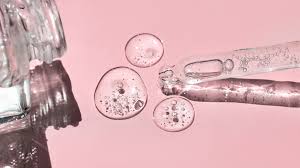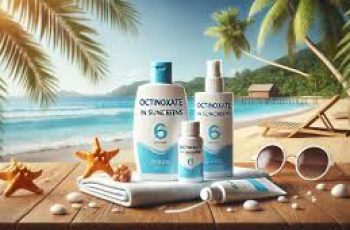
Understanding the Different Types of Hyaluronic Acid in Skincare
We’ve often sung the praises of hyaluronic acid—a true game-changer in the world of skincare. Renowned for its extraordinary ability to hydrate and revitalize the skin, hyaluronic acid (HA) has become a staple in countless beauty routines. Whether you’re a skincare novice or a seasoned enthusiast, chances are you’ve heard of this powerful ingredient. But did you know that there are actually several types of hyaluronic acid used in skincare formulations? That’s right—HA isn’t just one single thing, but a group of molecules with varying structures and purposes.
In this extended post, we’ll take a deep dive into the different types of hyaluronic acid, explore their unique properties, compare how they work, and provide helpful guidance on how to use them in your skincare routine for maximum results.
What is Hyaluronic Acid? A Quick Refresher
Before we get into the types of hyaluronic acid, it’s important to understand what it actually is. Hyaluronic acid is a naturally occurring substance in the human body, found primarily in connective tissues, skin, and eyes. It acts as a humectant, which means it draws moisture from the environment into the skin, helping it retain water and stay hydrated.
In fact, hyaluronic acid is capable of holding up to 1,000 times its weight in water, making it one of the most effective ingredients for skin hydration. As we age, the natural production of HA in our body decreases, which contributes to dryness, loss of elasticity, and the appearance of fine lines and wrinkles. That’s why incorporating it into your skincare routine can offer significant, visible benefits.
How Many Types of Hyaluronic Acid Are There?
Technically, there are three primary forms of hyaluronic acid used in skincare formulations. Each one plays a slightly different role depending on its molecular structure and size. These are:
1. Hydrolyzed Hyaluronic Acid
Hydrolyzed hyaluronic acid is created by breaking down larger HA molecules into smaller fragments. These smaller molecules can penetrate the upper layers of the skin more easily than their full-sized counterparts. However, because they don’t go too deep, their effects tend to be more surface-level.
Best for: Surface hydration and plumping effect. Ideal for people with dry or dull skin looking to restore a smoother texture.
2. Sodium Hyaluronate
Sodium hyaluronate is the salt form of hyaluronic acid and one of the most commonly used ingredients in skincare products. What makes this version stand out is its smaller molecular size, which allows it to penetrate deeper into the skin. It is also more stable and less prone to oxidation than traditional HA.
Another important point is that sodium hyaluronate is water-soluble, which helps it deliver hydration at a deeper level within the skin’s layers. This deeper penetration can lead to more long-term benefits such as improved skin elasticity and reduced appearance of wrinkles.
However, caution is advised when using products that contain a high concentration of sodium hyaluronate (usually more than 4%). In excess, it can actually have the opposite effect by drawing moisture out of the skin, especially in low-humidity environments, leading to dryness rather than hydration.
Best for: Deep hydration, anti-aging concerns, and maintaining skin elasticity. Great for mature or dehydrated skin.
3. Sodium Acetylated Hyaluronate
This lesser-known form of HA is a chemically modified derivative of sodium hyaluronate. By adding acetyl groups, this version becomes even more adhesive to the skin, providing longer-lasting hydration. It also forms a sort of protective film on the skin’s surface that helps lock in moisture.
It may not be as widely known as the other two, but sodium acetylated hyaluronate is becoming more popular due to its enhanced moisture-retention capabilities and longer-lasting results.
Best for: Long-lasting hydration, enhancing skin’s natural barrier, and protecting against moisture loss throughout the day.
Are All Hyaluronic Acids the Same?
Although all forms of hyaluronic acid share similar hydrating properties, they are not created equal. Their key differences lie in:
Molecular weight
Depth of penetration
Duration of effect
Stability in skincare formulas
This is why many high-quality skincare products include a blend of different HA molecules to offer multi-layer hydration. Combining these forms allows the product to deliver moisture both at the surface level and deeper into the dermis, creating a more balanced and effective formulation.
What Is the Best Type of Hyaluronic Acid for Skincare?
The answer to this question depends entirely on your skin type, concerns, and the climate you live in.
Dry or sensitive skin: Look for products that contain sodium acetylated hyaluronate or hydrolyzed HA for soothing and long-lasting surface hydration.
Aging or mature skin: Go for formulations that feature sodium hyaluronate for its ability to penetrate deeper and smooth out fine lines.
Combination or normal skin: A product that contains a blend of HA types is best, offering hydration at multiple levels of the skin.
What’s most important is to pay attention to the concentration and formulation. A well-formulated serum or moisturizer will often combine HA with other hydrating and barrier-supporting ingredients like glycerin, ceramides, or niacinamide.
How Much Hyaluronic Acid Is Effective in Skincare?
It’s a common misconception that more hyaluronic acid equals better results. In reality, there’s a sweet spot for effectiveness.
Most skincare products contain between 0.1% and 2% HA. Although some marketing materials may tout “90% hyaluronic acid,” this is usually misleading and refers to a base that contains HA diluted in water, not the actual concentration of HA.
In fact, high concentrations (especially of sodium hyaluronate) can backfire and cause trans-epidermal water loss, where the ingredient pulls moisture from the skin instead of the air—especially in dry environments.
Ideal concentration: Stick with 1–2%, particularly if you’re new to using HA. This level is effective, non-irritating, and delivers visible hydration benefits without compromising the skin barrier.
When and How Should You Apply Hyaluronic Acid?
For best results, apply hyaluronic acid to damp skin, not dry. This allows the ingredient to draw moisture into the skin more effectively. Follow up immediately with a moisturizer or face oil to lock in that hydration and seal it into the skin.
Ideal steps for using HA in your routine:
Cleanser – Start with a gentle, hydrating cleanser.
Toner or Mist – Lightly spritz your face with water or toner.
Hyaluronic Acid Serum – Apply a few drops while your face is still damp.
Moisturizer – Lock in hydration with a barrier-repairing cream or lotion.
SPF (Morning only) – Always protect your skin with sunscreen.
Does Age Matter When Using Hyaluronic Acid?
Not at all! Hyaluronic acid is one of the most universal and versatile ingredients in skincare and can benefit people of all ages. Whether you’re in your early twenties or well into your sixties, HA has a role to play in maintaining skin health.
Under 25: HA helps maintain moisture and prevent premature signs of aging.
25–40: Boosts hydration, reduces fine lines, and enhances glow.
40 and beyond: Provides deep hydration, softens wrinkles, and supports skin firmness.
When to See a Dermatologist
If you’re using HA-based skincare products consistently and still experiencing dryness or lack of improvement, it may be worth consulting a dermatologist. You may require stronger, prescription-grade treatments or have an underlying condition such as eczema or rosacea.
Also, as with any new product, patch testing is recommended. Apply a small amount behind the ear or on your wrist and monitor for 24 hours before introducing it to your face.
Final Thoughts: Is Hyaluronic Acid Worth the Hype?
Absolutely. Hyaluronic acid, in all its forms, is one of the most effective, versatile, and skin-friendly ingredients available in the beauty world. When used properly, it offers transformative hydration, plumps the skin, reduces signs of aging, and supports the skin barrier.
By understanding the differences between the various forms of HA, you can make smarter choices when selecting your skincare products. Look for multi-molecular formulations, apply it correctly, and always follow up with a moisturizer to lock in the benefits.
Want to learn more? Check out our other articles on chemical exfoliants like AHAs and BHAs, or subscribe to our YouTube channel, The Green Sofa, for more tips, tutorials, and expert insights on building the perfect skincare routine.


